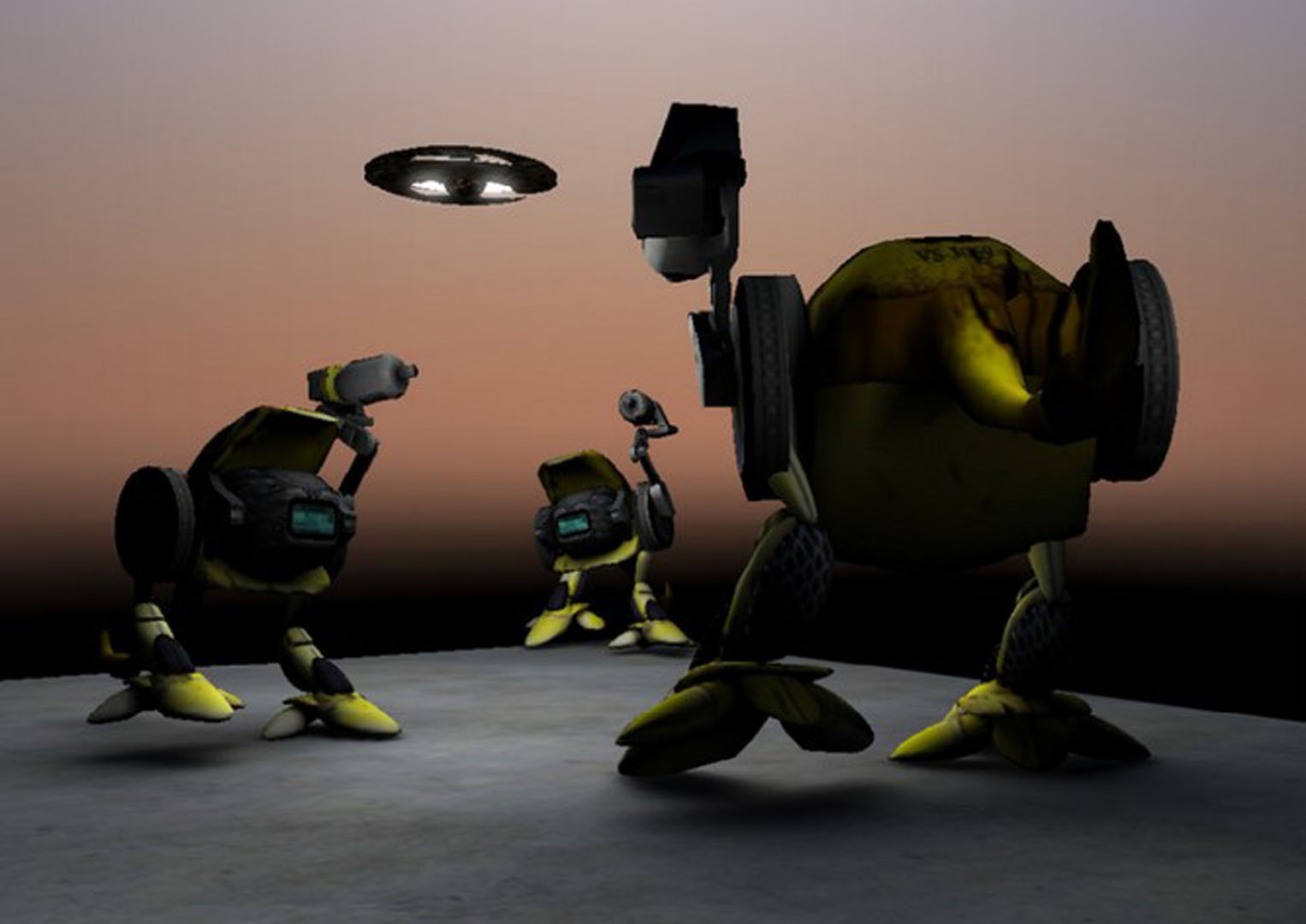“Precomputed shadow fields for dynamic scenes” by Zhou, Hu, Lin, Guo and Shum
Conference:
Type(s):
Title:
- Precomputed shadow fields for dynamic scenes
Presenter(s)/Author(s):
Abstract:
We present a soft shadow technique for dynamic scenes with moving objects under the combined illumination of moving local light sources and dynamic environment maps. The main idea of our technique is to precompute for each scene entity a shadow field that describes the shadowing effects of the entity at points around it. The shadow field for a light source, called a source radiance field (SRF), records radiance from an illuminant as cube maps at sampled points in its surrounding space. For an occluder, an object occlusion field (OOF) conversely represents in a similar manner the occlusion of radiance by an object. A fundamental difference between shadow fields and previous shadow computation concepts is that shadow fields can be precomputed independent of scene configuration. This is critical for dynamic scenes because, at any given instant, the shadow information at any receiver point can be rapidly computed as a simple combination of SRFs and OOFs according to the current scene configuration. Applications that particularly benefit from this technique include large dynamic scenes in which many instances of an entity can share a single shadow field. Our technique enables low-frequency shadowing effects in dynamic scenes in real-time and all-frequency shadows at interactive rates.
References:
1. Agrawala, M., Ramamoorthi, R., Heirich, A., and Moll, L. 2000. Efficient image-based methods for rendering soft shadows. In SIGGRAPH ’00, 375–384. Google ScholarDigital Library
2. Annen, T., Kautz, J., Durand, F., and Seidel, H.-P. 2004. Spherical harmonic gradients for mid-range illumination. In Euro. Symp. on Rendering, 331–336. Google ScholarDigital Library
3. Assarsson, U., and Akenine-Moller, T. 2003. A geometry-based soft shadow volume algorithm using graphics hardware. In SIGGRAPH ’03, 511–520. Google ScholarDigital Library
4. Chan, E., and Durand, F. 2003. Rendering fake soft shadows with smoothies. In Euro. Symp. on Rendering, 208–218. Google ScholarDigital Library
5. Crow, F. C. 1977. Shadow algorithms for computer graphics. In Computer Graphics (Proceedings of SIGGRAPH 77), vol. 11, 242–248. Google ScholarDigital Library
6. Drettakis, G., and Sillion, F. X. 1997. Interactive update of global illumination using a line-space hierarchy. In SIGGRAPH ’97, 57–64. Google ScholarDigital Library
7. Goesele, M., Granier, X., Heidrich, W., and Seidel, H.-P. 2003. Accurate light source acquisition and rendering. In SIGGRAPH ’03, 621–630. Google ScholarDigital Library
8. Heckbert, P., and Herf, M. 1997. Simulating soft shadows with graphics hardware. Tech. Rep. CMU-CS-97-104, Carnegie Mellon University.Google Scholar
9. Heidrich, W., Kautz, J., Slusallek, P., and Seidel, H.-P. 1998. Canned lightsources. In Rendering Techniques ’98, Eurographics, 293–300.Google Scholar
10. James, D., and Fatahaltian, K. 2003. Precomputing interactive dynamic deformable scenes. In SIGGRAPH ’03, 879–887. Google ScholarDigital Library
11. Kautz, J., Sloan, P., and Snyder, J. 2002. Fast, arbitrary brdf shading for low-frequency lighting using spherical harmonics. In Euro. Workshop on Rendering, 291–296. Google ScholarDigital Library
12. Kautz, J., Lehtinen, J., and Aila, T. 2004. Hemispherical rasterization for self-shadowing of dynamic objects. In Euro. Symp. on Rendering, 179–184. Google ScholarDigital Library
13. Lehtinen, J., and Kautz, J. 2003. Matrix radiance tranfer. In Symp. on Interactive 3D Graphics, 59–64. Google ScholarDigital Library
14. McMillan, L., and Bishop, G. 1995. Plenoptic modeling: an image-based rendering system. In SIGGRAPH ’95, 39–46. Google ScholarDigital Library
15. Mei, C., Shi, J., and Wu, F. 2004. Rendering with spherical radiance transport maps. In Eurographics ’04, 281–290.Google Scholar
16. Ng, R., Ramamoorthi, R., and Hanrahan, P. 2003. All-frequency shadows using non-linear wavelet lighting approximation. In SIGGRAPH ’03, 376–381. Google ScholarDigital Library
17. Ng, R., Ramamoorthi, R., and Hanrahan, P. 2004. Triple product wavelet integrals for all-frequency relighting. In SIGGRAPH ’04, 477–487. Google ScholarDigital Library
18. Ouhyoung, M., Chuang, Y.-Y., and Liang, R.-H. 1996. Reusable Radiosity Objects. Computer Graphics Forum 15, 3, 347–356.Google ScholarCross Ref
19. Sloan, P., Kautz, J., and Snyder, J. 2002. Precomputed radiance transfer for real-time rendering in dynamic, low-frequency lighting environments. In SIGGRAPH ’02, 527–536. Google ScholarDigital Library
20. Williams, L. 1978. Casting curved shadows on curved surfaces. In Computer Graphics (Proceedings of SIGGRAPH 78), vol. 12, 270–274. Google ScholarDigital Library
21. Wyman, C., and Hansen, C. 2003. Penumbra maps: Approximate soft shadows in real-time. In Euro. Symp. on Rendering, 202–207. Google ScholarDigital Library




